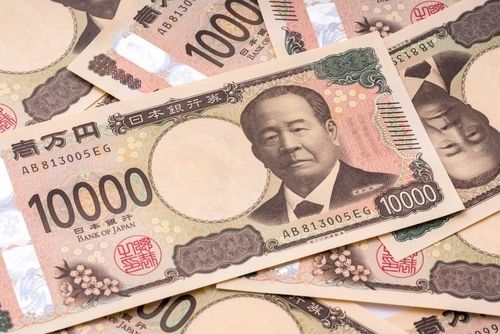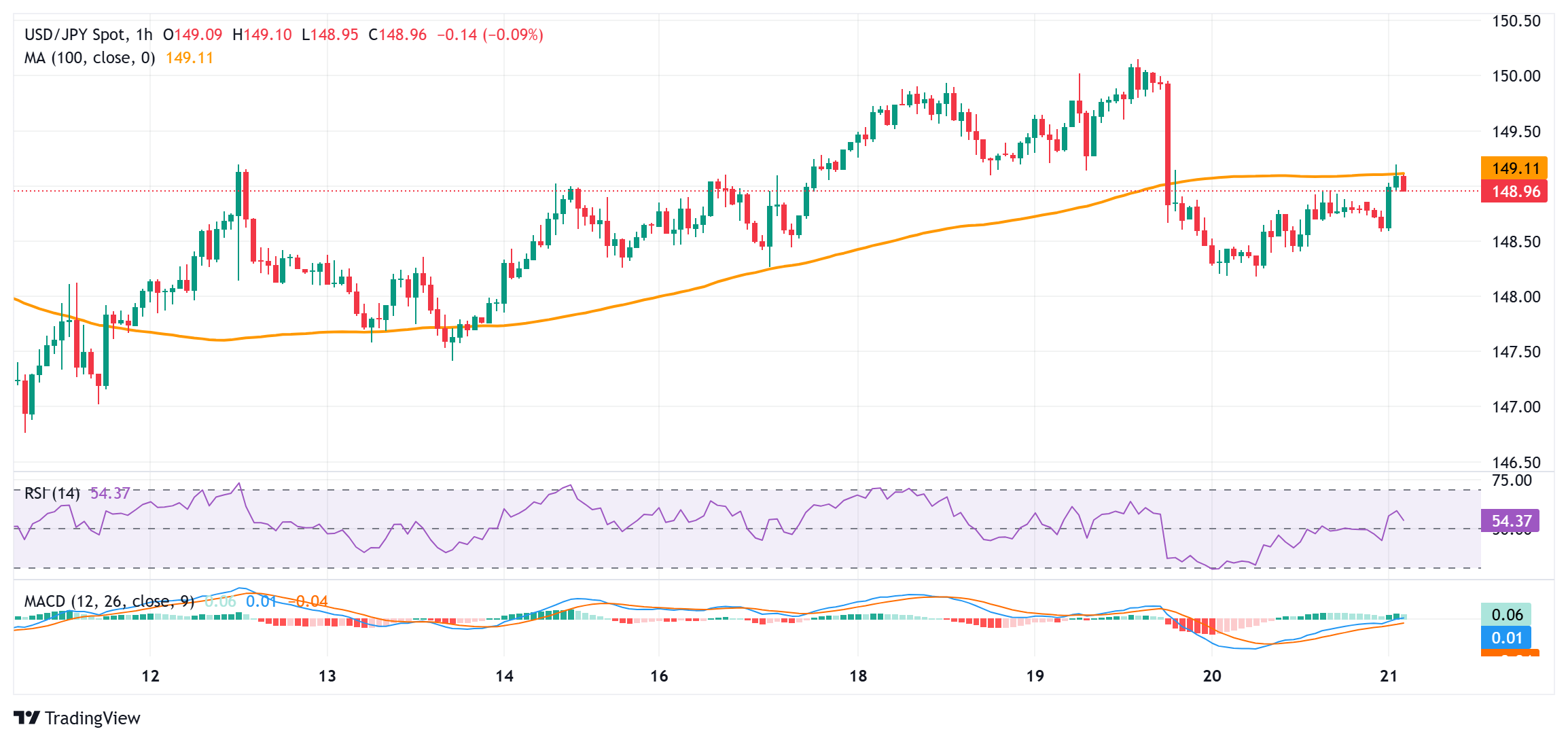
The Japanese Yen attracts some sellers following the release of Japan’s National CPI print.
A modest USD uptick further lends support to USD/JPY and lifts it above the 149.00 mark.
The divergent BoJ-Fed policy expectations should cap any meaningful gains for the major.
The Japanese Yen (JPY) edges lower during the Asian session on Friday after data released from Japan showed that the annual National Consumer Price Index (CPI) slowed in February. This, along with a modest US Dollar (USD) uptick, assists the USD/JPY pair to build on the overnight bounce from the weekly low and move back above the 149.00 mark in the last hour. However, bets that the Bank of Japan (BoJ) will continue raising interest rates, amid expectations that strong wage growth could boost consumer spending and contribute to rising inflation, should limit JPY losses.
Furthermore, persistent uncertainty over US President Donald Trump's aggressive trade policies and their impact on the global economy, along with geopolitical risks, should act as a tailwind for the safe-haven JPY. Meanwhile, bets that the Federal Reserve (Fed) will resume its rate-cutting cycle soon amid a tariff-driven slowdown, which might hold back the USD bulls from placing aggressive bets, mark a big divergence in comparison to hawkish BoJ expectations. This might further contribute to limiting losses for the lower-yielding JPY and capping the upside for the USD/JPY pair.
Japanese Yen bulls have the upper hand amid rising BoJ rate hike bets
Data released earlier this Friday showed that Japan's National Consumer Price Index (CPI) rose 3.7% YoY in February, slower than 4% in the previous month. Meanwhile, the nationwide core CPI, which excludes fresh food items, climbed 3% during the reported month from a year earlier compared to 3.2% in January, though the reading was slightly above the 2.9% expected.
Meanwhile, the preliminary results from Japan's annual spring labor negotiations revealed that firms largely agreed to union demands for strong wage growth for the third consecutive year. This, in turn, is anticipated to boost consumer spending and contribute to broadening inflationary pressures in Japan, giving the Bank of Japan headroom to keep hiking rates.
Moreover, BoJ Governor Kazuo Ueda said earlier this week that the Shunto result is largely in line with our January view and the central bank wants to conduct policies before it is too late. Ueda added that achieving a 2% inflation target is important for long-term credibility and the BoJ will keep adjusting the degree of easing if the economic, price outlook is to be realized.
In contrast, the Federal Reserve signaled that it would deliver two 25 basis points rate cuts by the end of this year. Moreover, the central bank revised its growth outlook downward amid the uncertainty over the impact of the Trump administration's trade policies. Adding to this, Fed Chair Jerome Powell said that tariffs are likely to dampen economic growth.
Both Russia and Ukraine stepped up aerial attacks on Thursday. In fact, Ukraine struck Russia’s Engels airbase, which hosts Russian strategic bombers used to attack Ukraine, in the Saratov region with attack drones, causing a fire and explosions in the area. Furthermore, Ukraine’s air force said Thursday that Russia had launched 171 drones over its territory.
Israel resumed heavy strikes across Gaza early this week, breaking the ceasefire with Hamas that was in place since late January. In response, Hamas fired three rockets at Israel on Thursday, without causing casualties. The development raises the risk of a further escalation of geopolitical tensions in the Middle East and underpins the safe-haven Japanese Yen.
The US Dollar looks to build on its modest recovery move from a multi-month low touched earlier this week and further lends some support to the USD/JPY pair. However, the divergent BoJ-Fed policy expectations should keep a lid on any meaningful gains for the currency pair in the absence of any relevant market-moving economic releases from the US on Friday.
USD/JPY bulls might wait for a move beyond the 149.20-149.25 hurdle
From a technical perspective, any further move up beyond the 149.25-149.30 immediate hurdle could assist the USD/JPY pair to reclaim the 150.00 psychological mark. Some follow-through buying beyond the 150.15 area might prompt a short-covering rally and lift spot prices to the 150.60 intermediate barrier en route to the 151.00 mark and the monthly peak, around the 151.30 region.
On the flip side, the Asian session low, around the 148.60-148.55 region, now seems to protect the immediate downside, below which the USD/JPY pair could accelerate the fall towards the weekly low, around the 148.28-148.15 area touched on Thursday. This is followed by the 148.00 mark and the 147.75 horizontal support, which if broken should pave the way for a fall towards the 147.30 region en route to the 147.00 mark and the 146.55-146.50 area, or the lowest level since early October touched earlier this month.
* The content presented above, whether from a third party or not, is considered as general advice only. This article should not be construed as containing investment advice, investment recommendations, an offer of or solicitation for any transactions in financial instruments.



